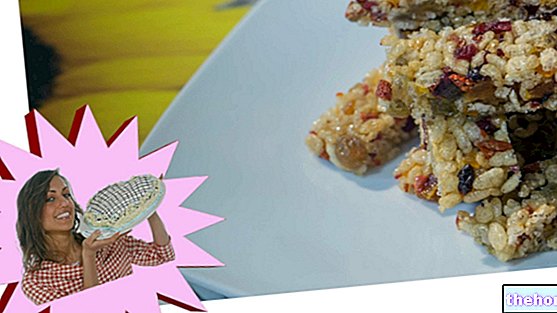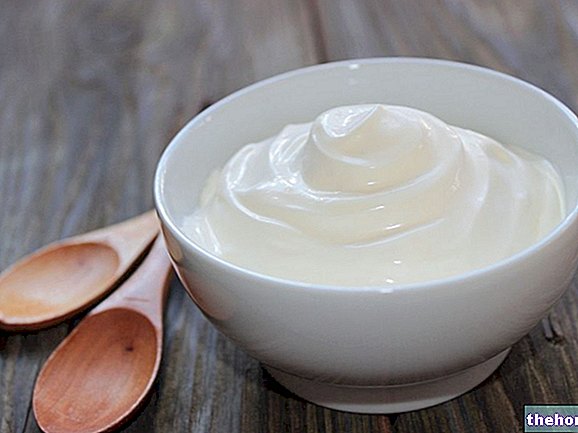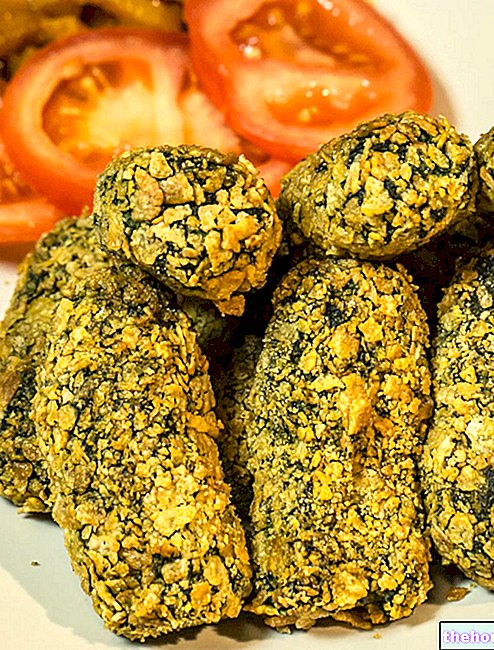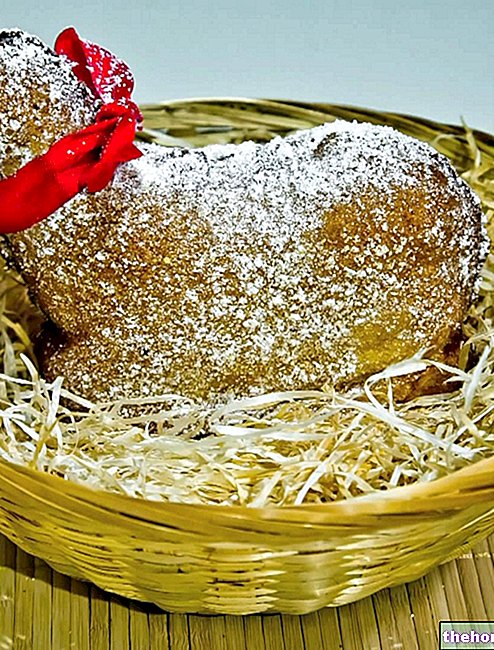Today we prepare a typically Tyrolean side dish: homemade sauerkraut. They are obtained by letting raw cabbage ferment in a saline solution for a few weeks. A real genius for preserving the vegetable, accentuating its flavor and enriching it with precious properties.
Video of the Recipe
Problems with playing the video? Reload the video from youtube.
Identity Card of the Recipe
- 19 KCal Calories per serving
-
Ingrediants
- 1 kg of cabbage
- 25 g of salt
- 1 tablespoon of mustard seeds
- 1 tablespoon of peppercorns
- 1 tablespoon of juniper berries
Materials Needed
- Salad spinner
- Very large bowl
- Glass container
- Transparent film
- Small cups or saucers
- Mandolin
- Scale weighs food
Preparation
- Clean the cabbage, remove the base and remove the outer leaves. Slice the cabbage into very thin strips, using a slicer or a mandolin.
- Rinse the cabbage in fresh water, drain and spin it to remove excess water.
Did you know that
The term "sauerkraut" comes from the German "kraut" which means "grass". Normally, cabbage is used to make sauerkraut, but red cabbage and savoy cabbage are also suitable for this preparation.- Weigh the cabbage, then add a dose of whole sea salt equal to 2.5% of the weight (calculate 25 g of salt per kilo of vegetable).
- Distribute the salt evenly, mixing thoroughly with your hands, trying to rub the strips of cabbage. Leave to rest for about an hour, stirring everything from time to time.
What happen?
The salt acts by osmosis, removing the vegetation water contained in the sauerkraut: for this reason, after about an hour, the cabbages will appear much less bulky.- After an hour, the cabbages will appear partially immersed in their liquid of vegetation. Place the cabbages in a glass or earthenware container, alternating the layers with any flavorings to taste (eg mustard seeds, broken black pepper, cumin seeds, juniper berries, etc.).
Attention!
For proper fermentation, the cabbages must appear completely immersed in the liquid of vegetation (therefore they must not come into direct contact with the air). If this is not the case, it is advisable to make a brine with 20 g salt / liter and to add the mixture - salty and cold - until the surface is completely covered.
Salt is also important to prevent the proliferation of gram negative bacteria, while at the same time favoring the development of good microbes (mainly lactobacilli).- Leave the cabbages to ferment for 3-4 weeks, in a fairly cool environment (15-22 ° C) and sheltered from direct light. For a correct fermentation, the cabbages must be completely immersed in the brine: to facilitate the procedure, it is advisable to place a sheet of transparent film on the surface and to place a weight on it (e.g. saucer, cups, etc.).
To understand
Sauerkraut has a sour and strong taste, a consequence of the natural fermentation (in which lactic acid is produced) that occurs during the rest: in this phase, the sauerkraut is enriched with vitamin B12 and the pH is naturally reduced.
They can be eaten raw within a week, or sautéed: cooking reduces the amount of ascorbic acid present.
Raw sauerkraut promotes digestion, as it strengthens the intestinal flora, thus warding off pathogenic bacteria and viruses.
At the end of fermentation, the sauerkraut must not appear soft, viscous, pink or rotten: these characteristics make the food inedible.- After a month of fermentation, the sauerkraut is ready: the smell they give off is strong, pleasantly pungent. They can be eaten raw, after having drained them from the brine: in that case, sauerkraut promotes digestion and is a source of vitamins. In addition, it is possible to pass them in a pan to flavor them.
- They can be kept in the fridge for a week, covered in brine or they can be pasteurized following the preservation method of jams.
For a long conservation
For a longer conservation, it is advisable to follow the method suggested for the pasteurization of the jam: boil glass jars with respective screw caps; fill the jars with sauerkraut along with their brine liquid; close the jars with the cap; insert the jars in cold water and bring to a boil; pasteurize the jars filled with sauerkraut for 15 minutes; turn off the heat and let it cool completely in the pasteurization water. The jars can be stored in a dark environment for one year.- Sauerkraut can be eaten as a side dish or used to fill sandwiches, accompany sausages or frankfurters.
Alice's comment - PersonalCooker
Preparing sauerkraut at home is easy: we just have to wait for time and rest to work for us. Try them also with red cabbage and accompany them with your favorite dishes: they will give you an almost unique flavor!Nutritional values and Health Comment on the recipe
Sauerkraut are preserved and fermented foods that belong to the side dish group.
They have a low energy intake, mainly provided by carbohydrates, followed by proteins and a negligible amount of lipids.
Carbohydrates are mainly simple, peptides of low biological value and polyunsaturated fatty acids.
Fiber is present in high quantities, while cholesterol is absent.
Sauerkraut is suitable for most diets, including those for overweight and metabolic pathologies.
They do not contain gluten and lactose.
The abundance of fiber can increase bowel movement.
They are relevant to the lacto-ovo vegetarian, vegan and raw food philosophy.
The average portion as a snack is 100-200g (about 20-40kcal).
The nutritional values refer to 100 grams of raw ingredients.




























